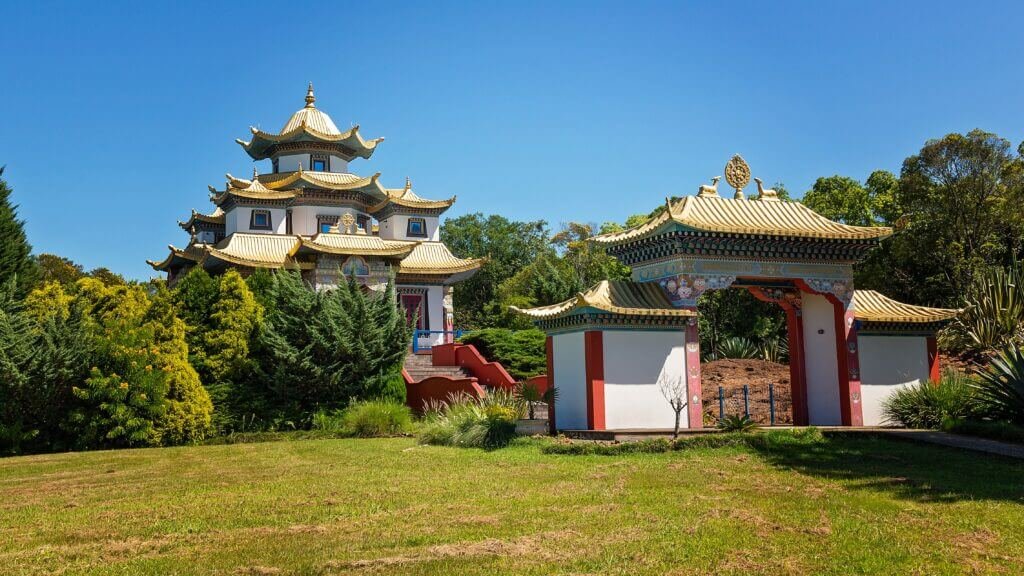Tea, one of the world’s most beloved beverages, has a rich and diverse history that spans across continents. From the rolling hills of China to the tranquil tea gardens of Japan, each region has its own unique specialty when it comes to this aromatic drink. Whether it’s the delicate green teas of Asia or the robust black teas of Africa, exploring the regional specialties in the world of tea is like embarking on a flavorful journey that tantalizes the taste buds and awakens the senses. So, grab your teacup and get ready to savor the distinct flavors and aromas that make each corner of the world a tea lover’s paradise. When it comes to tea, there is a vast array of regional specialties from different countries around the world. Each region has its own unique tea varieties, flavors, and brewing methods that make them stand out. In this article, we will explore the regional specialties of some prominent tea-producing countries, including China, Japan, India, Sri Lanka, Taiwan, Vietnam, Turkey, Morocco, Russia, and Iran. So grab a cup of your favorite tea and join us on this delightful journey of flavors and aromas!

China
Known as the birthplace of tea, China offers an impressive variety of tea types. One of the most famous Chinese teas is green tea, which is known for its fresh and grassy taste. Green tea is packed with antioxidants and is believed to have numerous health benefits. Some popular types of green tea from China include Longjing (Dragon Well), Biluochun (Green Snail Spring), and Mao Feng (Fur Peak).
Black tea, another specialty of China, is known for its rich and robust flavor. Different regions within China produce unique black teas, such as Keemun from Anhui province and Dian Hong (Yunnan Red) from Yunnan province. These teas are often enjoyed with a touch of milk or sugar to enhance their taste.
Oolong tea, a partially fermented tea, is also highly regarded in China. It falls between the categories of green and black tea, offering a diverse range of flavors and aromas. Some well-known oolong teas from China include Tie Guan Yin (Iron Goddess of Mercy), Da Hong Pao (Big Red Robe), and Shui Xian (Water Sprite).
White tea, which is made from the young leaves and buds of the tea plant, provides a delicate and subtle flavor profile. It is known for its high levels of antioxidants and is often associated with providing health benefits. Bai Hao Yin Zhen (Silver Needle) and Bai Mu Dan (White Peony) are popular white teas from China.
Yellow tea, a rare and precious tea type, goes through a unique processing method that gives it a distinctive taste. Huang Shan Mao Feng (Yellow Mountain Fur Peak) and Meng Ding Huang Ya (Yellow Buds) are examples of yellow teas that are highly sought after by tea connoisseurs.
Lastly, Pu-erh tea, originally from the Yunnan province, is a fermented tea that gains enhanced flavors and complexity over time. It can be aged for several years, resulting in a smooth and earthy taste. Pu-erh tea is available in two forms: raw (sheng) and cooked (shou). It is often enjoyed for its potential health benefits and is regarded as a prized collector’s item.
Japan
In Japan, tea is not only a beverage but also a part of cultural traditions and ceremonies. The most famous Japanese tea is Matcha, a powdered green tea used in the renowned Japanese tea ceremony. Matcha has a vibrant green color and a rich umami flavor. It is prepared by whisking the powdered tea with hot water until it becomes frothy. Matcha is known for its calming effects and is believed to provide mental clarity and focus.
Sencha, the most commonly consumed tea in Japan, is a steamed green tea with a refreshing taste. It has a bright green color and a grassy aroma. Sencha is enjoyed throughout the day and is known for its numerous health benefits.
Genmaicha, also known as “popcorn tea,” is a unique Japanese blend that combines green tea with toasted rice. This tea has a nutty and toasty flavor, thanks to the addition of roasted rice kernels. Genmaicha is a popular choice for those seeking a comforting and satisfying brew.
Hojicha is a roasted green tea that offers a mellow and smoky flavor. It is made by roasting leaves at a high temperature, resulting in a reddish-brown color. Hojicha has lower caffeine content compared to other green teas, making it a suitable choice for those looking for a calming and soothing tea.
Gyokuro, known as the highest quality Japanese tea, is grown in shaded gardens to enhance the levels of chlorophyll and amino acids in the leaves. This tea has a sweet and savory taste, with a rich and vibrant green color. Gyokuro is often considered a luxury tea and is savored for its exceptional flavor and aroma.

India
India is the second-largest tea producer in the world and is known for its strong and flavorful teas. The country offers a wide range of tea varieties, each with its own characteristics and brewing methods.
Assam tea, named after the Assam region in northeastern India, is a robust and malty black tea. It is known for its strong flavor and dark liquor. Assam tea is often enjoyed with milk and sugar and is the key ingredient in many popular blends, including English Breakfast tea.
Darjeeling tea, grown in the foothills of the Himalayas, is often referred to as the “Champagne of teas.” It has a delicate and floral flavor with muscatel notes. Darjeeling tea is available in different flushes, each offering a unique taste profile. First flush teas are light and fragrant, while second flush teas are more full-bodied and amber in color.
Nilgiri tea, produced in the southern region of India, is known for its bright and brisk character. These teas have a clean and refreshing taste with a gentle aroma. Nilgiri teas are often used in blends and are a popular choice for iced tea due to their smoothness.
Masala Chai, a beloved Indian spiced tea, is made by combining Assam or Darjeeling tea with a fragrant blend of spices such as cardamom, cinnamon, cloves, and ginger. Masala Chai is traditionally brewed with milk and sweetened with sugar, providing a comforting and aromatic experience.
Kashmiri Kahwa, a specialty tea from the Kashmir region, is a blend of green tea, saffron, cardamom, cinnamon, and almonds. It has a unique and exotic flavor with a subtle sweetness. Kashmiri Kahwa is often served with a drizzle of honey and is cherished for its warmth and aroma.
Sri Lanka
Sri Lanka, formerly known as Ceylon, is renowned for its world-class tea production. The country’s unique geography and climate contribute to the exceptional quality of its teas.
Ceylon tea, named after the country itself, is known for its bright and lively flavors. It can be classified into three main types: black tea, white tea, and green tea. Ceylon black tea is full-bodied and robust, while Ceylon green tea offers a more delicate and grassy taste. Ceylon white tea, made from the youngest leaves and buds, provides a subtle and refined flavor.
Sri Lanka is celebrated for its tea estates that span across picturesque landscapes, including the high-altitude Nuwara Eliya region and the fertile slopes of Dimbula. The teas produced in these regions are highly sought after for their distinct terroir and unique flavor profiles.

Taiwan
Taiwan, also known as Formosa, is famous for its high-quality teas, which are carefully cultivated and processed on the island. Taiwanese teas are known for their floral and aromatic qualities.
High Mountain Tea, grown in the mountainous regions of Taiwan, is highly regarded for its exquisite flavor and fragrance. These teas undergo a unique cultivation process at high altitudes, resulting in a complex and aromatic brew. High Mountain teas are available in different grades, with higher grades offering more refined and nuanced flavors.
Dong Ding Tea, also known as “Frozen Summit” tea, is a heavily oxidized oolong tea. It is characterized by its rolled and tightly twisted leaves, which unfurl during brewing, releasing a rich and fragrant aroma. Dong Ding Tea has a smooth and sweet taste with a hint of roasted notes.
Baozhong Tea, also known as “Pouchong” tea, is a lightly oxidized tea with a floral and delicate flavor. It is processed using a unique rolling technique, which gives the leaves a twisted appearance. Baozhong Tea has a light and refreshing taste, making it a popular choice for those seeking a gentle and aromatic tea.
Vietnam
Vietnam, one of the world’s largest tea producers, offers a variety of unique teas with distinctive flavors. The country’s picturesque landscapes and favorable climate contribute to the cultivation of high-quality teas.
Lotus Tea, a specialty of Vietnam, is made by placing green tea leaves inside lotus flowers, allowing them to absorb the floral aroma. The tea leaves are then dried, resulting in a fragrant and soothing brew. Lotus Tea is highly regarded and often associated with relaxation and meditation.
Jasmine Tea, another popular choice in Vietnam, is made by blending green tea leaves with jasmine flowers. The tea leaves absorb the sweet scent of the flowers, resulting in a delicately perfumed beverage. Jasmine Tea is known for its calming effects and is a beloved choice for tea enthusiasts.
Turkey
Tea holds a special place in Turkish culture, with traditional tea houses (çay bahçesi) playing a vital role in social gatherings. Turkish tea is known for its strong and rich flavor, and is typically served in small tulip-shaped glasses.
Turkish Black Tea, also known as “çay,” is brewed using a double teapot method. The tea leaves are steeped in the smaller upper pot while water boils in the larger lower pot. The brewed tea is then diluted with hot water to achieve the preferred strength. Turkish Black Tea is served piping hot and is often enjoyed with sugar cubes or a squeeze of lemon.
Rize Tea, named after the Rize province in northeastern Turkey, is highly regarded for its excellent quality. It is grown in lush tea gardens and has a strong and full-bodied flavor. Rize Tea is a staple in Turkish households and is deeply ingrained in the country’s tea-drinking culture.
Morocco
Moroccan Mint Tea, also known as “Maghrebi Mint Tea,” is an integral part of Moroccan culture and hospitality. It is a combination of green tea leaves and fresh mint leaves, sweetened with sugar. The tea is prepared through a traditional pouring technique to create a frothy layer on top. Moroccan Mint Tea is often served in small glasses and is cherished for its refreshing and aromatic qualities.
Russia
Russian Caravan Tea, a specialty of Russia, is a blend of black teas from China, India, and Sri Lanka. It is named after the historic trade route along the Silk Road, which was used to transport tea from Asia to Russia. Russian Caravan Tea has a smoky and robust flavor, reminiscent of the traditional method of transporting tea in camel-drawn caravans.
Zavarka, meaning “tea concentrate” in Russian, is the traditional brewing method used for Russian tea. Zavarka involves steeping a strong black tea concentrate in a teapot, which is then diluted with hot water to the desired strength. Russian tea culture often emphasizes the communal aspect of tea drinking, where family and friends gather to enjoy tea and engage in lively conversations.
Iran
Tea holds a significant place in Iranian culture, with tea houses (chai-khanehs) serving as popular meeting spots for socializing. Persian Tea, also known as “Chai,” is typically brewed with black tea leaves and brewed in a samovar, a traditional tea kettle. It is served in small glasses and often accompanied by sugar cubes or rock candy. Persian Tea is enjoyed throughout the day and is especially cherished during family gatherings and ceremonies.
In conclusion, the world of tea is full of regional specialties that offer a diverse range of flavors, aromas, and brewing techniques. From the delicate and subtle white teas of China to the robust and full-bodied black teas of India, each country offers its own unique take on the beloved beverage. So the next time you sip on a cup of tea, take a moment to appreciate the rich history and cultural significance behind each regional specialty. Cheers!


